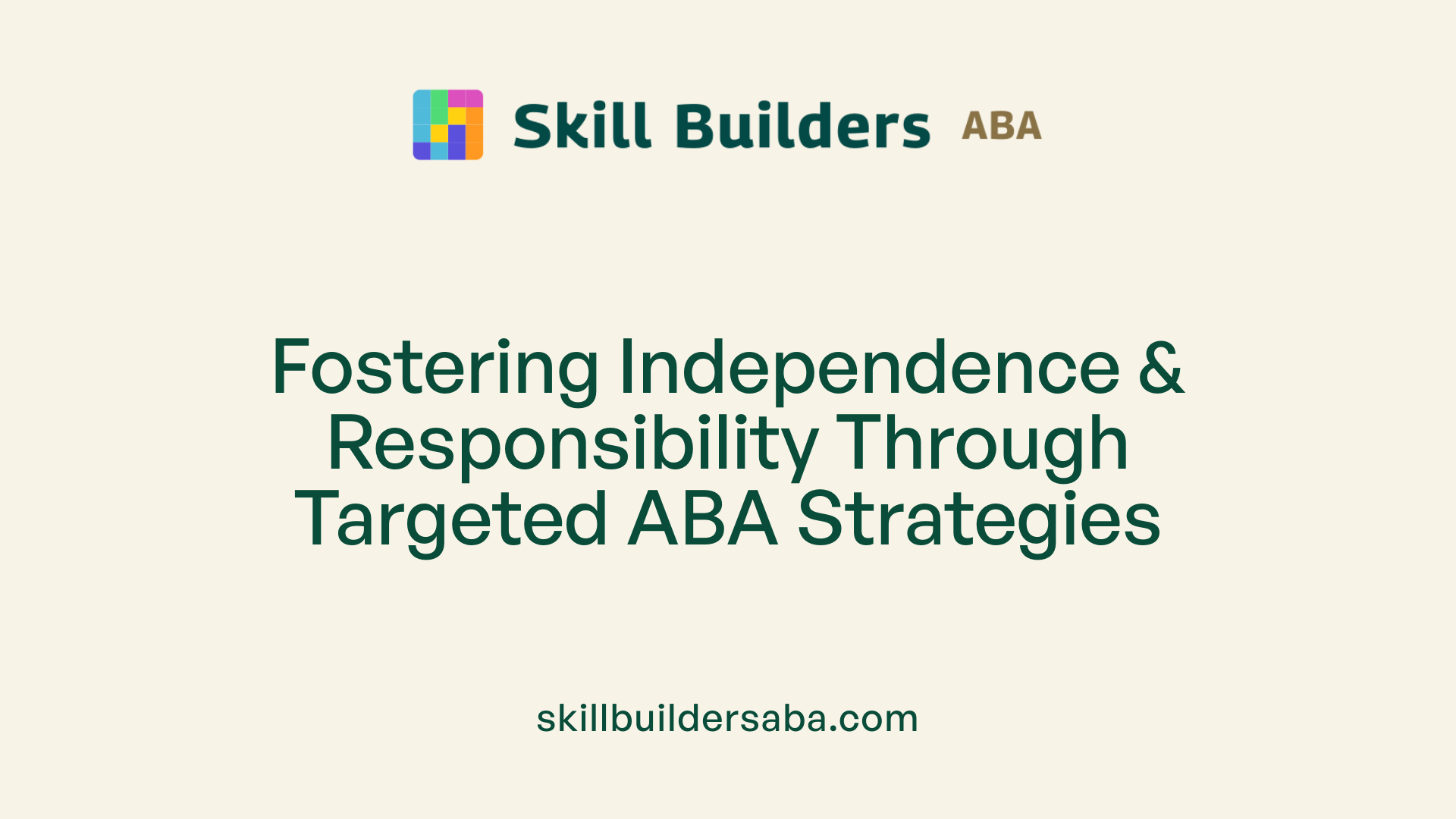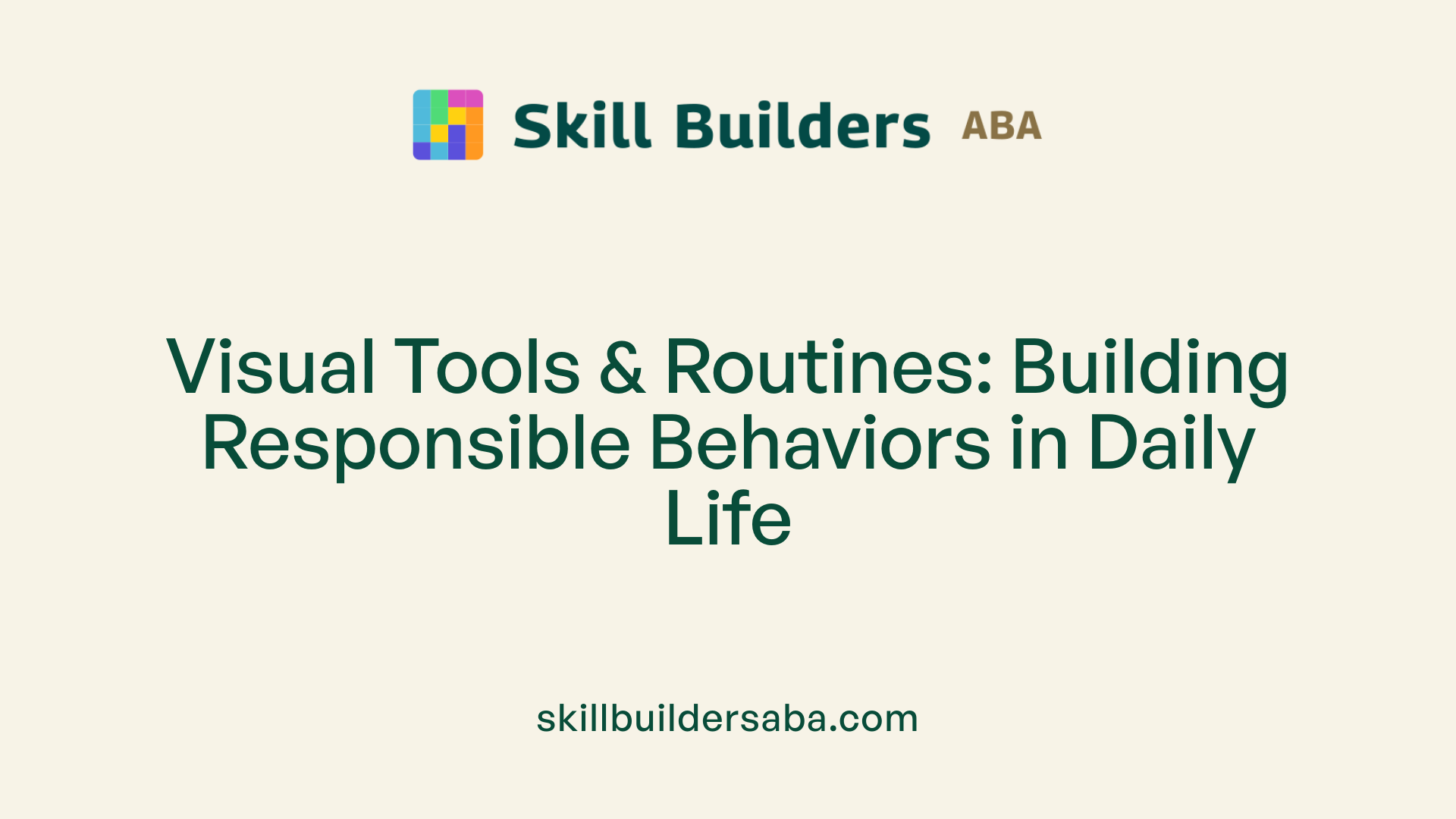
ABA strategies for teaching chores and responsibilities
Empowering Independence: ABA Techniques for Teaching Chores and Responsibilities
Unlocking Daily Skills with ABA Strategies
A structured approach like Applied Behavior Analysis (ABA) offers effective methods for teaching children with autism essential chores and responsibilities. This article explores how ABA strategies can foster independence, develop self-management skills, and promote responsible behaviors that translate across various settings, including home, school, and community environments.
Core ABA Strategies in Teaching Responsibilities

What approaches does ABA use to develop independence and responsibility?
ABA (Applied Behavior Analysis) uses various effective strategies to foster independence and responsibility in children with autism. Therapists implement structured teaching methods, including breaking tasks into smaller, manageable parts and providing consistent reinforcement for successful completion. Role-playing, social skills training, and video modeling are utilized to teach daily living and social responsibilities.
Functional behavior assessments help identify individual motivations and obstacles, allowing for personalized intervention plans. These plans often involve environmental modifications, such as organizing the home or classroom to support task completion. Systematic data collection and ongoing progress monitoring ensure that children learn, generalize, and sustain responsible behaviors over time. Parental involvement is integral, with caregivers trained to reinforce skills regularly and consistently.
By focusing on practical routines and responsibilities, ABA helps children gain confidence and autonomy in everyday life.
How can ABA techniques be used to teach chores and responsibilities?
Teaching chores and responsibilities with ABA involves several tailored techniques. First, task analysis is crucial; it breaks down chores like laundry, dishwashing, or tidying into small, sequential steps. This approach makes tasks less overwhelming and more approachable.
Positive reinforcement plays a central role—praise, tokens, or preferred rewards are given immediately after task completion to motivate continued effort. Visual supports such as picture schedules, timers, and reward charts clarify expectations and help children track their progress.
Consistency is key: establishing routines and modifying the environment—like organizing supplies or reducing sensory overload—supports focus and reduces anxiety. Caregivers are trained to apply these strategies across settings, ensuring the skills are learned and maintained outside therapy sessions.
This comprehensive approach promotes children’s independence in completing chores, building responsibility that carries over into daily life.
What reinforcement strategies are effective in ABA?
Effective reinforcements in ABA focus on increasing the likelihood of desired behaviors through immediate, personalized rewards. Positive reinforcement involves adding a pleasant stimulus—such as verbal praise, stickers, or access to preferred activities—after a target behavior occurs.
Sometimes, negative reinforcement is used by removing an unpleasant stimulus to encourage behavior. For instance, eliminating a sensory overload or reducing task difficulty when a child demonstrates progress.
Reinforcement schedules vary—fixed or variable—to maintain motivation and prevent dependency. The choice depends on the specific skill being taught and the child's preferences. Reinforcement not only helps acquire new skills but also strengthens existing ones and decreases maladaptive behaviors.
In all cases, reinforcement should be age-appropriate, consistent, and systematically implemented to support meaningful learning.
Can ABA help children learn daily living skills and responsibilities?
Absolutely, ABA is highly effective in teaching daily living skills. It uses evidence-based strategies like task analysis, positive reinforcement, and natural environment training to promote independence.
Activities such as grooming, dressing, and meal preparation are broken down into small steps, making them easier to learn and perform. These skills are practiced in both structured and natural settings to promote generalization.
Caregivers are actively involved, with training provided to ensure consistent reinforcement and practice at home. This collaborative approach helps children transfer skills beyond therapy sessions, allowing them to confidently manage everyday responsibilities.
Overall, ABA enables children with autism to develop the skills necessary for independent living, contributing to their overall well-being and quality of life.
What are effective reinforcement ideas in ABA therapy?
Effective reinforcement ideas include various tangible and social rewards tailored to the child's preferences. Common examples are verbal praise, tokens, stickers, or small toys.
Privileges such as extra time for favorite activities, screen time, or access to preferred toys also serve as motivators. Immediate reinforcement following the targeted behavior ensures a clear connection, which strengthens learning.
Parents and therapists can personalize these rewards, increasing their effectiveness. Varying reinforcement types and schedules also helps sustain motivation over time.
Ultimately, well-chosen reinforcement strategies significantly enhance skill acquisition, promote task completion, and foster positive behaviors.
Using Visual Supports and Routines to Teach Responsibilities

How can visual schedules with pictures or symbols be implemented?
Visual schedules are an essential tool in helping children with autism understand and complete daily routines. Using pictures or symbols, caregivers and educators create a visual sequence of activities, such as brushing teeth, dressing, or chores like laundry and dishwashing. These schedules can be displayed as wall charts, checklists, or individual cards that the child interacts with.
The key is to make the visuals simple, clear, and predictable, helping children anticipate what comes next. Incorporating visual cues with timers also helps children understand the duration of each activity, promoting time management skills.
Visual supports reduce overwhelm and increase independence by providing concrete guidance. They also serve as a communication bridge when verbal language skills are developing or limited.
How are timers and reward systems used to motivate children?
Timers are valuable tools in ABA to help children understand the passage of time and manage transitions between tasks. By setting a visual or auditory timer, children receive a clear signal when an activity begins or ends, fostering patience and structure.
Reward systems, such as stickers, tokens, or small toys, are used alongside timers to reinforce desirable behaviors like task completion or staying on schedule. For instance, a child might earn a sticker after completing a chore or following a routine for a set amount of time.
Using immediate and tangible rewards increases motivation and encourages repeated behavior. Over time, caregivers can fade out the use of tangible reinforcers, replacing them with intrinsic motivation or social praise.
How can routines for chores and responsibilities be made engaging?
Transforming chores into fun activities boosts motivation and engagement. For example, sorting laundry can become a game where the child sorts clothes by color, or washing dishes can be turned into a race to see who cleans their items faster.
Incorporating interactive elements like role-playing scenarios for shopping or visiting the doctor helps children practice social responsibilities in safe, controlled environments. Making chores a routine part of daily life, with clear visual cues and predictable steps, also teaches responsibility.
Rewarding progress and offering choices—like selecting chores or rewards—fosters a sense of ownership and long-term interest. Turning responsibilities into playful, meaningful activities supports skill acquisition and independence.
How do reinforcement strategies in ABA support these routines?
Reinforcement strategies involve providing consequences that increase the likelihood of desired behaviors. In these routines, positive reinforcement—such as verbal praise, tokens, or preferred activities—serves to motivate children and reinforce routine completion.
Fading prompts and visual aids gradually helps children take ownership of tasks, moving toward independent performance. Consistent reinforcement across settings—home, school, and community—ensures skills are generalized and maintained.
Overall, combining visual supports, timers, engaging routines, and reinforcement creates an effective framework for teaching responsibilities to children with autism.
Implementing ABA in Natural Environments to Promote Skill Generalization

How does Natural Environment Teaching (NET) promote skill use in real-world settings?
Natural Environment Teaching (NET) is a cornerstone method within ABA that emphasizes teaching skills directly in the child’s everyday surroundings. Instead of isolated therapy settings, NET takes place during routine activities, such as mealtime, play, or errands. This approach leverages naturally occurring opportunities to reinforce skills, making learning more meaningful and directly relevant.
In NET, therapists and caregivers prompt and reinforce desired behaviors during typical activities, helping children practice skills in the contexts where they will use them most. For example, encouraging a child to request items during a shopping trip or practice social greetings at school helps skills stick and transfer across different environments. The goal is to make sure that learning isn’t restricted to therapy rooms but applies seamlessly elsewhere.
Which strategies promote skill development in real-world environments?
To foster effective generalization, several strategies are employed in natural settings:
- Task analysis: Breaking down daily routines into manageable steps, like sorting laundry or washing hands.
- Prompt fading: Using cues to guide behavior initially, then quietly removing prompts to foster independence.
- Visual supports: Applying picture schedules, cue cards, and timers to clarify expectations and reduce frustration.
- Reinforcement in context: Offering praise or preferred items immediately after skill demonstration in real-life situations.
- Caregiver involvement: Training family members to implement ABA strategies ensures consistency.
Integrating these techniques into daily routines helps children apply learned skills across various settings, promoting lasting independence.
How are caregivers involved in reinforcing skills learned through ABA?
Caregivers play an essential role in the success of ABA interventions, especially within natural environments. They act as active partners by modeling behaviors, providing prompts when necessary, and reinforcing skills consistently.
During daily activities, caregivers can use visual supports like picture checklists or timers to guide tasks such as chores or personal care. Offering immediate praise, tokens, or preferred activities as reinforcement encourages children to repeat desired behaviors. Additionally, caregivers are trained by ABA therapists to understand when and how to fade prompts, fostering autonomous task completion.
To ensure skills are maintained over time, caregivers incorporate routines, rotate chores to maintain engagement, and celebrate progress. This collaborative approach maximizes the chances that children generalize skills across different settings and contexts, leading to greater independence and confidence.
| Strategies in Natural Environments | Description | Examples |
|---|---|---|
| Task Analysis | Breaking routines into steps | Sorting clothes, brushing teeth |
| Prompt Fading | Gradually reducing assistance | Moving from gestures to independent steps |
| Visual Supports | Using pictures and timers | Checklists for chores, visual schedules |
| Reinforcement in Context | Immediate praise or rewards | Verbal praise during activities |
| Caregiver Training | Teaching caregivers ABA techniques | Demonstrations, role-playing |
Implementing these methods at home and in community settings ensures that children with autism develop functional skills that enhance their independence and quality of life.
Fostering Independence Through Structured Teaching
Integrating ABA strategies into daily routines and chores empowers children with autism to gain independence, build responsibility, and develop essential life skills. Collaborating with trained professionals and actively involving caregivers ensures that skills are generalized across settings and maintained over time. Through structured, engaging, and personalized interventions, ABA helps children confidently navigate their responsibilities, leading to a more autonomous and fulfilling life.
References
- Self-Management Skills: Teaching Independence and Responsibility
- How ABA Therapy Helps with Daily Living Skills
- 5 Interactive ABA Activities That Teach Independent Living Skills
- Chores and ABA: Growing Independence at Home
- Making Chores Fun: Using ABA Principles to Teach Responsibility
- The Role of ABA Therapy in Early Intervention for Autism
- What is Applied Behavior Analysis?
- Independence in Individuals with Autism: Role of ABA Therapy
- Applied Behavior Analysis in Early Childhood Education
- Applied Behavior Analysis (ABA) | Autism Speaks
Reach Out Today
Learn more about how we can support your child’s growth and development. Contact us to discuss our services and availability in your area.
.svg)